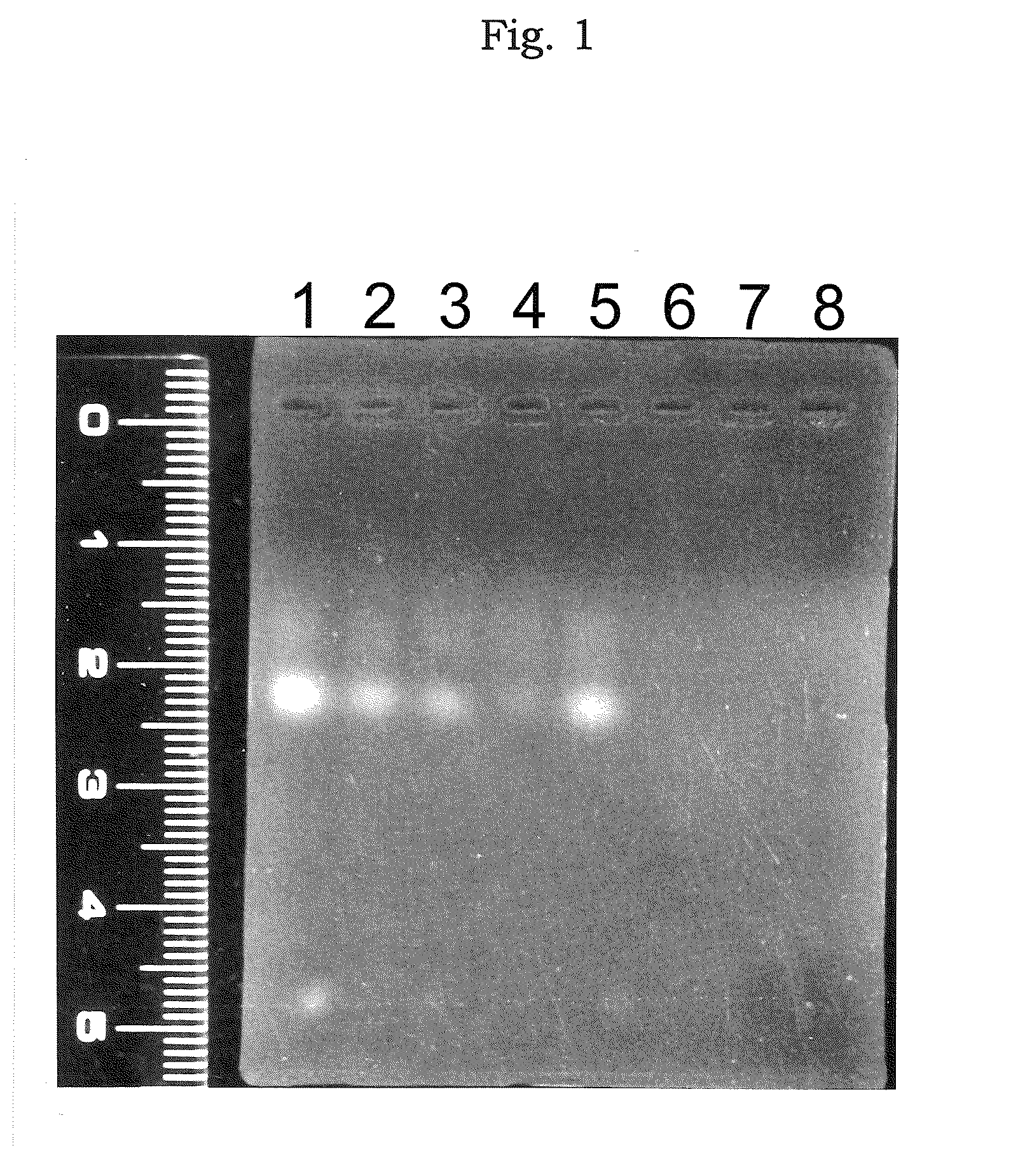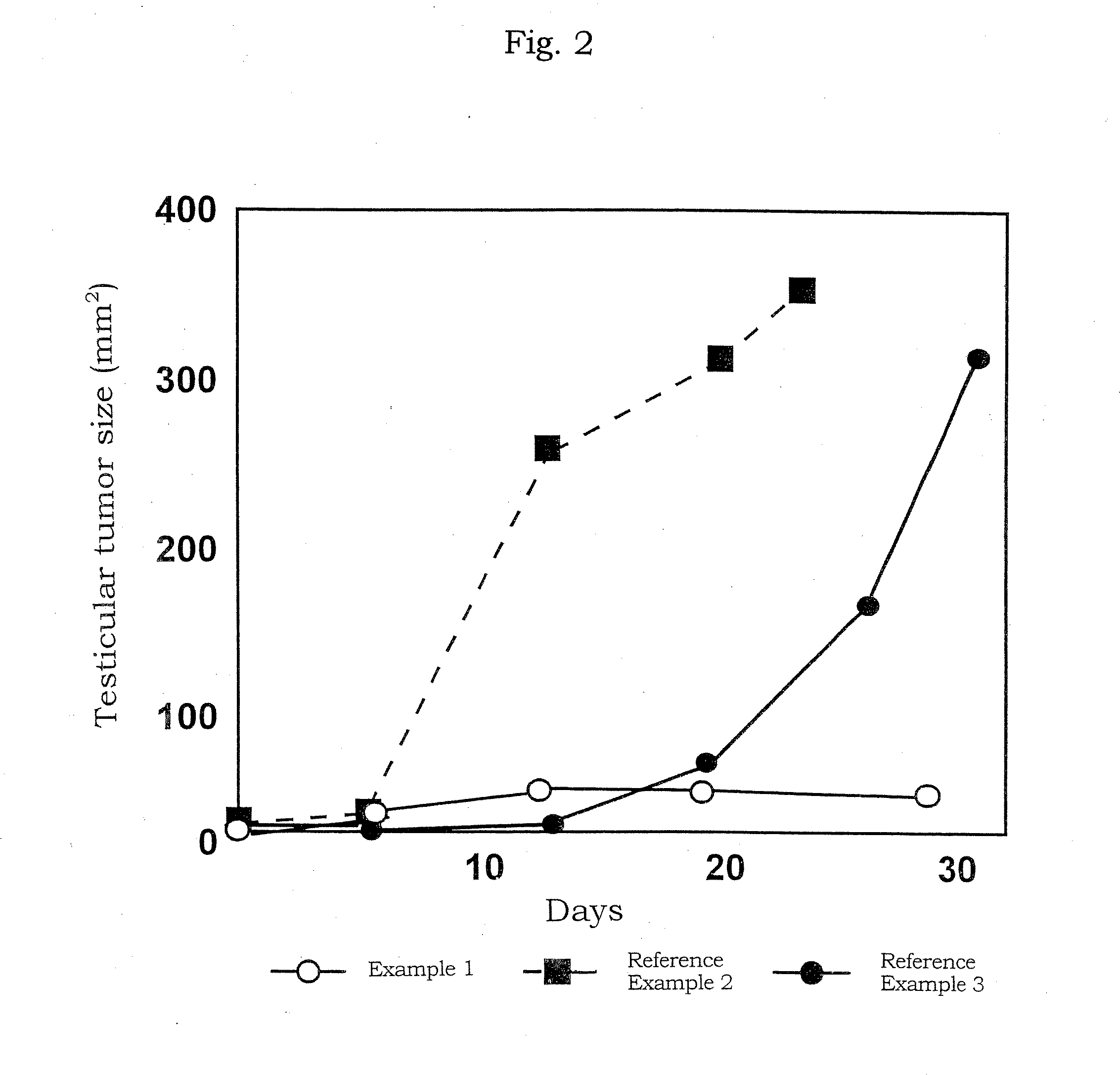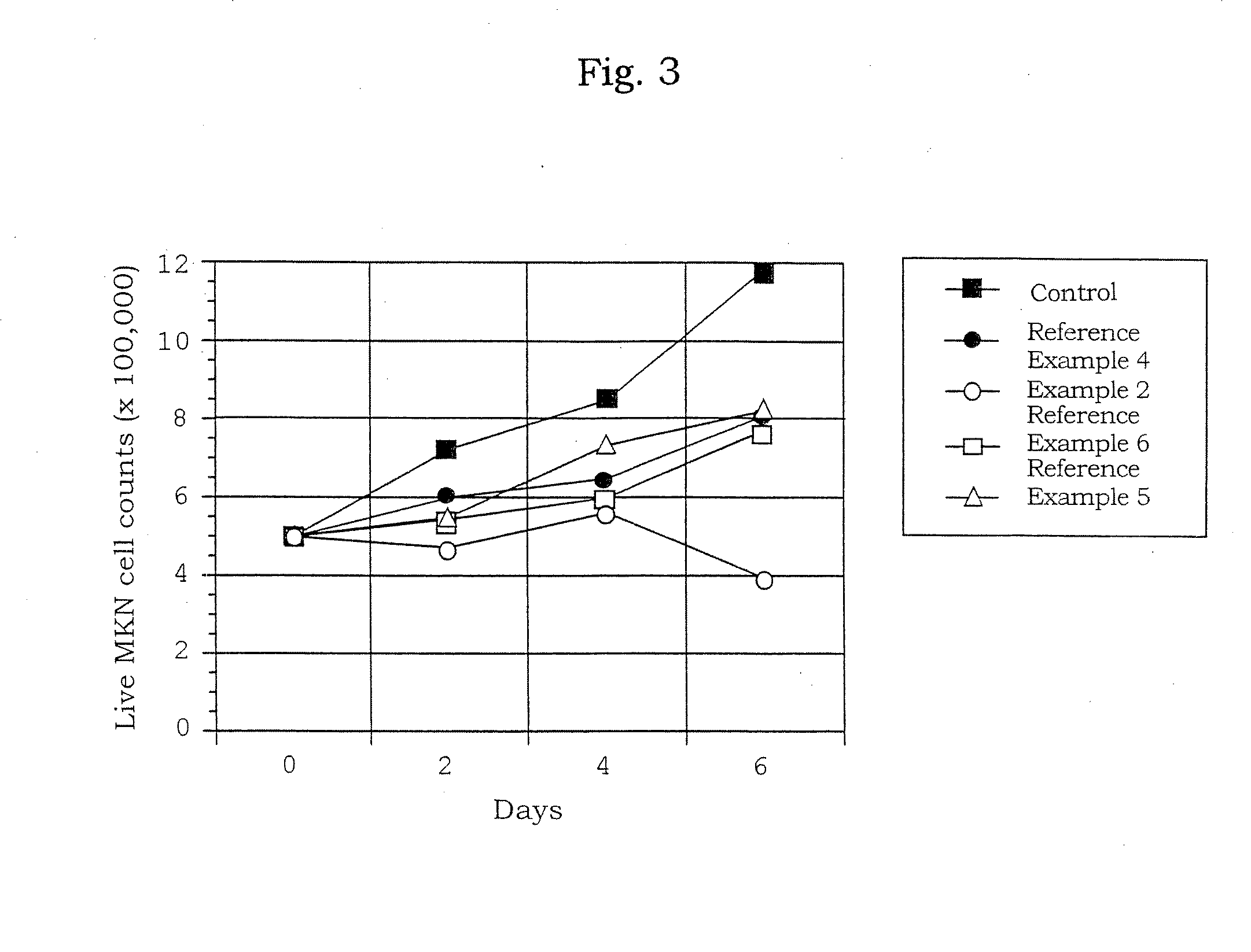Oligonucleotides-transferring preparations
a technology of oligonucleotides and preparations, applied in the direction of non-active genetic ingredients, drug compositions, genetic material ingredients, etc., can solve the problems of slow degradation and inactivation, difficulty in allowing negatively charged oligonucleotides to penetrate through cell membranes, and failure to completely satisfy the requirements of anti-sense therapy, etc., to inhibit the expression of the target m-rna
- Summary
- Abstract
- Description
- Claims
- Application Information
AI Technical Summary
Benefits of technology
Problems solved by technology
Method used
Image
Examples
example 1
[0199]The preparation in a solution form for transferring an oligonucleotide which comprises atelocollagen at the final concentration of 0.5%, was prepared by mixing the phosphorothioate antisense oligonucleotide (5′-CTCGTAGGCGTTGTAGTTGT-3′ (SEQ ID NO:1); molecular weight, about 6,500) (manufactured by Sawaday) having a sequence complementary to a sequence from 4196 bp to 4216 bp of the fibroblast growth factor HST-1 (FGF4) gene (described in Proc. Natl. Acad. Sci. USA, 84, 2890-2984 (1987)) with a neutral solution of atelocollagen (atelocollagen implant manufactured by KOKEN CO., LTD.; 2% atelocollagen solution) to be the final concentration to 10 μmol / L.
example 2
[0200]The preparation in a solution form for transferring an oligonucleotide was prepared by mixing the phosphorothioate type antisense oligonucleotide (AS-ODC, 5′-TCATGATTTCTTGATGTTCC-3′ (SEQ ID NO: 2) manufactured by ESPEC OLICO SERVICE CORP.) having a sequence complementary to a sequence from 319 bp to 338 bp in the ornithine decarboxylase gene with a neutral solution of atelocollagen (atelocollagen implant manufactured by KOKEN CO., LTD.; 3.5 w / w % atelocollagen solution; the final concentration, 1.75 w / w %) to bring the final concentration of the oligonucleotide to 0.5, 1.5, 2, 2.5 mmol / L.
example 3
[0201]The preparation for transferring an oligonucleotide which contains a liposome was prepared by mixing AS-ODC with 0.5 μL of a neutral solution of atelocollagen (atelocollagen implant manufactured by KOKEN CO., LTD.; 3.5 w / w % atelocollagen solution; final concentration, 1.75 wt %) and 1.5 μL of Transfast (Promega) to bring the final concentration of the oligonucleotide to 1.0 mmol / L.
PUM
| Property | Measurement | Unit |
|---|---|---|
| molecular weight | aaaaa | aaaaa |
| pH | aaaaa | aaaaa |
| pore size | aaaaa | aaaaa |
Abstract
Description
Claims
Application Information
 Login to View More
Login to View More - R&D
- Intellectual Property
- Life Sciences
- Materials
- Tech Scout
- Unparalleled Data Quality
- Higher Quality Content
- 60% Fewer Hallucinations
Browse by: Latest US Patents, China's latest patents, Technical Efficacy Thesaurus, Application Domain, Technology Topic, Popular Technical Reports.
© 2025 PatSnap. All rights reserved.Legal|Privacy policy|Modern Slavery Act Transparency Statement|Sitemap|About US| Contact US: help@patsnap.com



